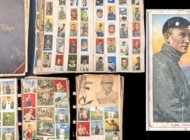By Greg Smith
BEDFORD, PENN.— On February 21, auction platform AuctionZip rolled out a redesigned search function that aims to deliver more relevant results to a broader range of users on the site.
Parent company and auction platform Invaluable, then known as Artfact, acquired AuctionZip in 2009. AuctionZip’s reputation among the dealer and collector community has always been that of a “discovery” level platform, where small estate auctions would list galleries of photographs of upcoming items with scant descriptions to advertise uncataloged sales that did not feature internet bidding.
The redesigned search function is part of a broader effort that began in 2019. Since that time, the site has unveiled a new home page, a new product detail page, new catalog pages, a header and footer, and more.
Longtime users of the site had come to know the prior search function, which placed a user’s location as the primary filter. Users would enter their zip code and filter by a radius of miles around them, which would bring them to a calendar page that would indicate a quantity of sales on any given day ahead. Clicking on a certain day would bring them to a list of those sales on that day that they could then explore individually.
That calendar has been nixed, but users are still able to search by distance radius. They are also able to filter results by more options, including “Time Ending: Soonest,” “Recently Added,” sale date range and product categories.
As follows many redesign projects, some users within the collecting community were not pleased with the change and took to collecting forums to urge others to contact AuctionZip customer support.
“Any time we put something out, we are always looking at feedback and making changes. Change is hard and this was a significant change,” said Beth Beiriger, executive vice president of product management at Invaluable.
But the change is supported by the site’s user data, which the company has been poring over.
“Looking at the trends, it was showing us that users or bidders were increasingly trying to find online auctions…trying to find items they wanted online rather than find the item at an auction in person.”
This trend falls in line with an auction model that has transformed the industry at all levels: online-only sales. At the bottom end of the business, buyers and sellers are currently seeing a transformation in the estate sale and uncataloged estate auction house model where new and established companies are ditching the rent and in-person sales and going online entirely.
With this, the site opens up to new sellers and more items, which represent the currency of any platform.
As for users and buyers, “Many of the issues with AuctionZip were caused because we asked users to click through a lot of links to get to the items that they were interested in,” Beiriger said. “We need to connect a buyer with an auctioneer that is selling that unique item that they want.”
The updated search function in particular represents a shift in the site’s core demographic — it’s not just for pickers and collectors anymore. It is also for general population buyers interested in certain and specific things, an audience whose potential size dwarfs the selling community.
Beiriger’s improvements also aim to open the site up to the many formats of internet browsing. Mobile users account for 50 percent of the site’s traffic today, up 10 percent from last year when AuctionZip released a fully responsive format. IOS and Android apps are available for people who like to use apps.
The expanded emphasis on a keyword search brings the platform in line with many others that aim to make the auction buying process — long an impediment to the industry — as simple as possible. The key word is accessibility, and the site’s new built-in personalization tools help to promote that further.
“We are using AI technology where we can take data points, if a user is logged in, and we’re able to personalize the home page and have aspects that are being curated specifically for what that user is looking for. We have hundreds of thousands of items, so anything we can do to make the discoverability for that user more easy is positive,” Beiriger said.
The metrics shows the redesigns are benefiting the user experience. Beiriger says the site’s bounce rate is down 5 percent, the exit rate is down 10 percent, and as for page views, which stand at 3 million per month, users are spending more time on each page.
Part of that is because the site’s notoriously small thumbnail images have been made larger. The galleries allow for more product images and more information, which lets users make a better-informed buying decision.
“We did a significant amount of user research,” Beiriger said. “We sent out surveys to users and non-users. We also built prototypes and tested them in front of existing users.”
Beiriger estimates that the site update is 60 to 70 percent complete, with new rollouts occurring in the next half year to include updated locations, listings and category pages.




